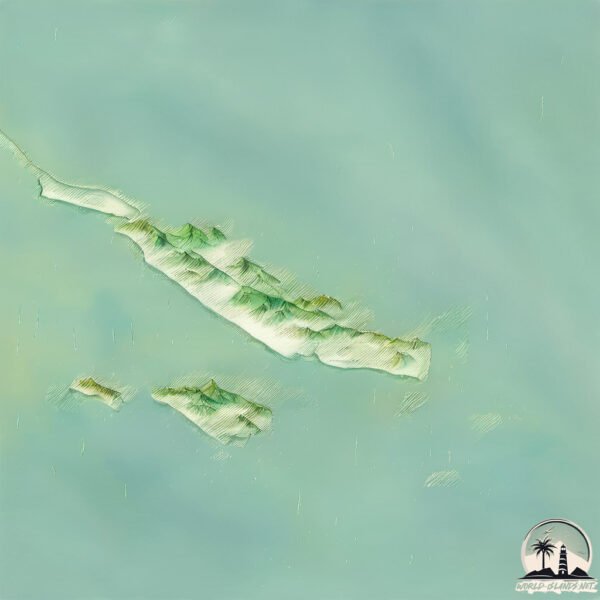Welcome to Jiangjunmao , a Temperate island in the Eastern China Sea, part of the majestic Pacific Ocean. This guide offers a comprehensive overview of what makes Jiangjunmao unique – from its geography and climate to its population, infrastructure, and beyond. Dive into the details:
Geography and size of Jiangjunmao
Size: 16.1 km²Coastline: 43 kmOcean: Pacific OceanSea: Eastern China SeaContinent: Asia
Jiangjunmao is a Medium Island spanning 16 km² with a coastline of 43 km.
Archipel: –
Tectonic Plate: Yangtze – A minor tectonic plate in East Asia, often considered a part of the Eurasian Plate. It’s primarily continental and covers the Yangtze River area in China, playing a significant role in the region’s geological stability.
The geographic heart of the island is pinpointed at these coordinates:
Climate and weather of Jiangjunmao
Climate Zone: TemperateClimate Details: Humid Subtropical ClimateTemperature: Hot Summer
Climate Characteristics: With continuous rainfall and hot summers, this climate is common in some coastal regions, supporting diverse vegetation.
Topography and nature of Jiangjunmao
Timezone: UTC+08:00Timezone places: Australia/PerthMax. Elevation: 34 m Mean Elevation: 5 mVegetation: Sparse VegetationTree Coverage: 93%
The mean elevation is 5 m. The highest elevation on the island reaches approximately 34 meters above sea level. The island is characterized by Plains: Flat, low-lying lands characterized by a maximum elevation of up to 200 meters. On islands, plains are typically coastal lowlands or central flat areas.
Dominating Vegetation: Sparse Vegetation
Vegetation: 4 vegetation zones – Diverse Island
Infrastructure and Travelling to Jiangjunmao
Does the island have a public airport? no .
Does the island have a major port? no .
The mean population of Jiangjunmao is 771 per km². Jiangjunmao is Densely Populated. The island belongs to China .
Continuing your journey, Qushan Dao is the next notable island, situated merely km away.
《印尼·李王岛》第1集:飞越千里寻找那昂贵的美乐珠,值得吗?#赶海 #抓螃蟹 #椰子螺 #海鲜烧烤 #美乐珠
全网首个“探索全球海岛”的环球旅行博主沿途分享~赶海、美食、渔猎、潜水、自驾、海钓等自由行攻略2021.07.07开始我的环球探 ...
《印尼·李王岛》第1集:飞越千里寻找那昂贵的美乐珠,值得吗?#赶海 #抓螃蟹 #椰子螺 #海鲜烧烤 #美乐珠
全网首个“探索全球海岛”的环球旅行博主沿途分享~赶海、美食、渔猎、潜水、自驾、海钓等自由行攻略2021.07.07开始我的环球探 ...
全网首个“探索全球海岛”的环球旅行博主沿途分享~赶海、美食、渔猎、潜水、自驾、海钓等自由行攻略2021.07.07开始我的环球探 ...
《环球探海记》阿曼 第25天:今天虽是小潮,但是完全不影响赶海,依然海获多多!#真实赶海记录#阿曼自由行#中东地区
全网首个以“探索全球海岛”的旅行博主沿途分享~赶海、美食、渔猎、潜水、自驾、等自由行攻略2021.07.07开始我的环球探海之旅 ...
全网首个以“探索全球海岛”的旅行博主沿途分享~赶海、美食、渔猎、潜水、自驾、等自由行攻略2021.07.07开始我的环球探海之旅 ...
《环球探海记》阿曼~第8天:今天带1位英国朋友去赶海,让他感受到什么是“野生鲍鱼”泛滥!
全网首个以“探索全球海岛”的旅行博主沿途分享~赶海指数、潜水指数、消费指数、风景指数2021年07月07日开始我的环球之旅!
全网首个以“探索全球海岛”的旅行博主沿途分享~赶海指数、潜水指数、消费指数、风景指数2021年07月07日开始我的环球之旅!
China is classified as Emerging region: BRIC: Brazil, Russia, India, and China – Economies noted for their rapid growth and increasing influence on global affairs. The level of income is Upper middle income.
News – Latest Updates and Headlines from Jiangjunmao
Stay informed with the most recent news and important headlines from Jiangjunmao. Here’s a roundup of the latest developments.
Loading...
Please note: The data used here has been primarily extracted from satellite readings. Deviations from exact values may occur, particularly regarding the height of elevations and population density. Land area and coastline measurements refer to average values at mean high tide.

